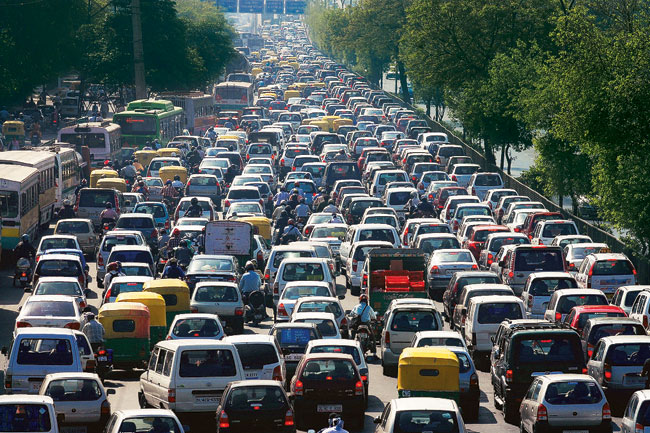Rush-Hour Traffic Pollution Can Spike BP, Up Heart Risk Upto 24 Hrs: Study
Nov 29, 2023 | Pratirodh Bureau
Long-term exposure to traffic-related air pollution is linked to cardiovascular diseases, asthma and lung cancer (Representational Image)
An alarming study has revealed that breathing unfiltered air from rush-hour traffic can significantly increase passengers’ blood pressure upto 24 hours later. Meanwhile, New Delhi and the nearby regions of Ghaziabad and Gurugram have been dealing with bad air quality for about a month.
Traffic-related air pollution is a complex mixture of exhaust from tailpipes, brake and tire wear, and road dust. Long-term exposure to such pollution has been linked to increased rates of cardiovascular disease, asthma, lung cancer and death.
Published in detail in the Annals of Internal Medicine, the new study showed that the inhalation of traffic-related air pollution while travelling in a car with unfiltered air was associated with a 4.5 mm Hg increase in blood pressure. This is comparable to the effects of a high-sodium diet.
This change in blood pressure takes place rapidly, peaks within 60 minutes of exposure and persists over 24 hours.
According to Joel Kaufman, a physician and professor of environmental and occupational health sciences at University of Washington, US, “We know that modest increases in blood pressure like this, on a population level, are associated with a significant increase in cardiovascular disease.”
Kaufman added, “There is a growing understanding that air pollution contributes to heart problems. The idea that roadway air pollution at relatively low levels can affect blood pressure this much is an important piece of the puzzle we’re trying to solve.”
The study revealed that using high-quality HEPA filters in cars blocked out 86 per cent of particulate pollution. However, the findings raise questions about ultrafine particles, an unregulated and little-understood pollutant that has become a source of growing concern among public health experts.
Air pollution caused due to traffic emissions contains high concentrations of ultrafine particles — these are less than 100 nanometres in diameter, much too small to be seen.
The study found that unfiltered air contained high levels of ultrafine particles, though the overall level of pollution as measured by fine particle concentration (PM 2.5) was relatively low, equivalent to an AQI of 36.
Kaufman said, “Ultrafine particles are the pollutant that were most effectively filtered in our experiment — in other words, where the levels are most dramatically high on the road and low in the filtered environment.” He added, “So, the hint is that ultrafines may be especially important (for blood pressure). To actually prove that requires further research, but this study provides a very strong clue as to what’s going on.”
Meanwhile, findings by one of the nation’s top research agencies, Central Road Research Institute (CRRI), reveal that Delhi’s eight most erratic traffic bottlenecks are guzzling at least 40,000 kilolitres of fuel daily while vehicles wait in peak rush hours. Worse still, it is adding to the city’s pollution with nearly 115 tonnes of carbon dioxide (CO2) being released daily.
The amount of fuel burnt in just idling of vehicles at traffic intersections amounts to 39,806 kg (diesel, petrol and CNG vehicles combined) and the quantity of carbon dioxide produced equals 1,15,609 kg — that is 115 tonnes of the unhealthy black soot. These figures, which have been collected from just eight traffic junctions of Delhi, imply that if an absolute figure was to be derived from all busy crossroads of the Capital, then the numbers are bound to be much bigger than this.
